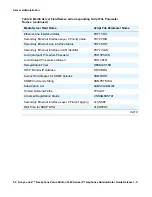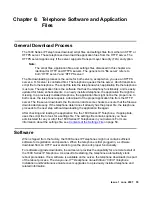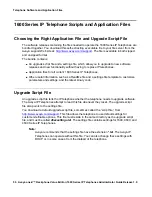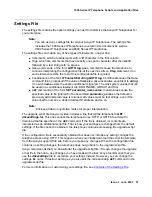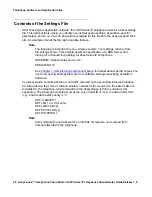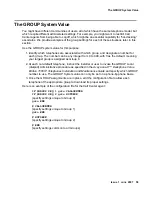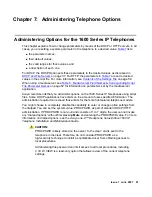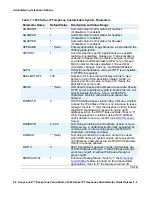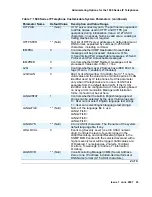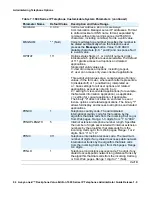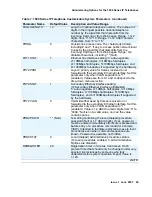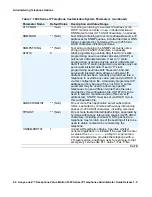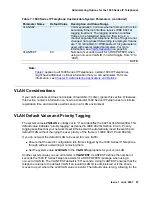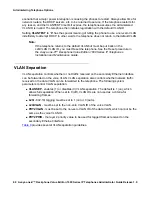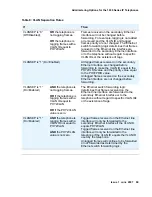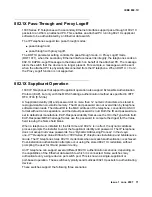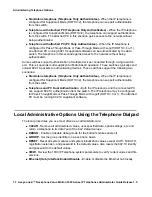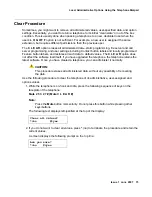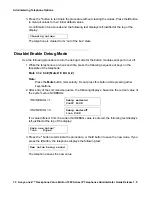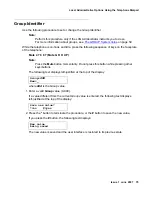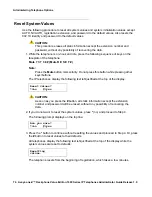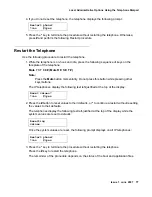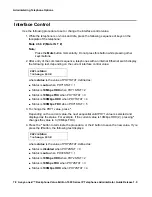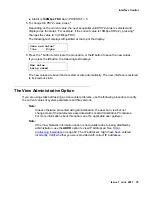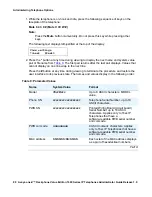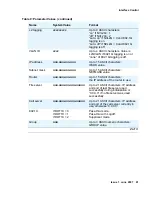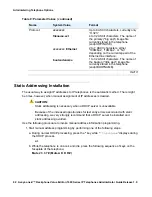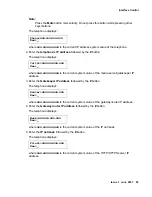
Administering Telephone Options
68 Avaya one-X™ Deskphone Value Edition 1600 Series IP Telephones Administrator Guide Release 1.0
scenario that a major power interruption is causing the phones to restart. Always allow time for
network routers, the DHCP servers, etc. to be returned to service. If the telephone restarts for
any reason and the VLANTEST time limit expires, the telephone assumes the administered
VLAN ID is invalid. The telephone then initiates registration with the default VLAN ID.
Setting
VLANTEST
to “
0
” has the special meaning of telling the phone to use a non-zero VLAN
indefinitely to attempt DHCP. In other words, the telephone does not return to the default VLAN.
Note:
Note:
If the telephone returns to the default VLAN but must be put back on the
L2QVLAN VLAN ID, you must Reset the telephone. See the Reset procedure in
the
Avaya one-X™ Deskphone Value Edition 1600 Series IP Telephones
Installation and Maintenance Guide
.
VLAN Separation
VLAN separation controls whether or not traffic received on the secondary Ethernet interface
can be forwarded on the voice VLAN. VLAN separation also controls whether network traffic
received on the data VLAN can be forwarded to the telephone. The following system
parameters control VLAN separation:
●
VLANSEP
- enables (1) or disables (0) VLAN separation. The default is 1 (on), which
allows full separation. When set to 0 (off), VLAN IDs are not used as a criteria for
forwarding frames.
●
L2Q
- 802.1Q tagging must be set to 1 (on) or 0 (auto).
●
L2QVLAN
- must be set to the non-zero VLAN ID of the voice VLAN.
●
PHY2VLAN
- must be set to the non-zero VLAN ID of the data VLAN, which cannot be the
same as the voice VLAN ID.
●
PHY2PRIO
- the layer 2 priority value to be used for tagged frames received on the
secondary Ethernet interface.
Table 8
provides several VLAN separation guidelines.

